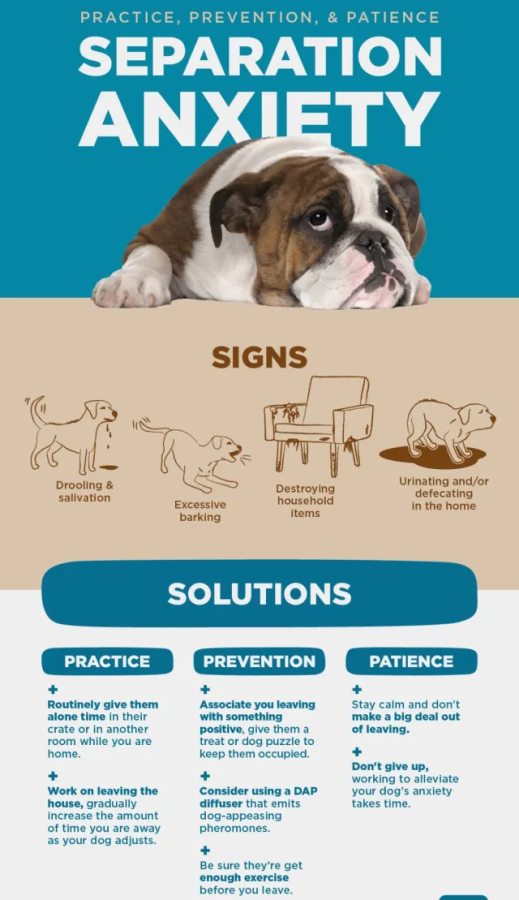To get a dog to stop barking in a crate, first, provide plenty of physical and mental exercise to tire them out, then slowly desensitize them to the crate by making it a positive place with treats and toys. This process can take time and patience, but it can help alleviate the barking behavior.
Dealing with a barking dog in a crate can be stressful and frustrating for both the pet and the owner. However, by understanding the reasons behind the barking and implementing effective training methods, you can successfully address this issue. We will explore various tips and techniques to help you stop your dog from barking in the crate, allowing for a peaceful and harmonious coexistence between you and your furry companion.

Understanding Crate Training
Understanding crate training is essential when it comes to getting your dog to stop barking in the crate. Crate training is a process that involves teaching your dog to view their crate as a safe and comfortable space, akin to their den. By understanding the benefits of crate training and the importance of a comfortable crate, you can effectively address your dog’s barking behavior and create a peaceful environment for both of you.
Benefits Of Crate Training
Crate training offers several benefits that can help your dog overcome their barking tendencies. These benefits include:
- Providing a safe space: Dogs are den animals by nature and feel secure in small, enclosed spaces. A crate gives them a designated area where they can retreat and feel at ease.
- Aiding in-house training: Crating your dog when you’re unable to directly supervise them can prevent accidents and aid in their house training progress.
- Reducing anxiety: Dogs often experience anxiety when left alone. Crate training can help alleviate their stress by providing a familiar and secure environment.
- Promoting good behavior: When properly crate trained, dogs learn to associate their crate with positive experiences. This can encourage them to behave well and relax while in their crate.
Importance Of A Comfortable Crate
Creating a comfortable crate environment is essential to address your dog’s barking behavior effectively. A comfortable crate will make them more willing to enter and stay settled in their crate. Here are some key factors for ensuring a comfortable crate:
- Size: Make sure the crate is large enough for your dog to stand up, turn around, and lie down comfortably.
- Bedding: Provide soft bedding, such as a crate pad or blanket, to make the crate cozy and inviting for your dog.
- Temperature: Ensure the crate is situated in a comfortable temperature zone, away from direct sunlight or drafts.
- Noises: Keep the crate in a quiet area of your home, away from loud noises or distractions that may agitate your dog.
- Visibility: Consider covering a portion of the crate with a blanket or crate cover to create a den-like atmosphere, providing a sense of security and privacy.
By understanding the benefits of crate training and the importance of a comfortable crate, you can set the stage for success in getting your dog to stop barking in their crate. Remember to be patient, consistent, and positive throughout the crate training process, and always make the crate a positive and welcoming space for your furry friend.

Credit: www.youtube.com
Identifying The Cause Of Barking
Identifying the cause of barking in a crate is essential in finding an effective solution. Understanding the underlying reasons behind your dog’s barking will help you address the issue in a way that is both humane and practical.
Separation Anxiety
Dogs that experience separation anxiety may exhibit excessive barking when confined to a crate. This is often accompanied by destructive behavior, such as scratching or chewing on the crate, and other signs of distress. It’s important to address separation anxiety with patience and positive reinforcement, as punishing the behavior can exacerbate the issue.
Boredom Or Lack Of Stimulation
When dogs are left alone in a crate without adequate mental and physical stimulation, they may bark out of boredom or frustration. Providing interactive toys, chew treats, and regular exercise can help alleviate this issue. Engaging your dog in activities and training exercises can also prevent boredom and reduce barking while in the crate.
Establishing A Positive Association With The Crate
Introducing a positive association with the crate is pivotal in ensuring your dog feels comfortable and safe, ultimately leading to reduced barking. By following a few simple techniques, you can help your dog view the crate as a secure and happy place.
Introducing The Crate Gradually
Start by placing the crate in an area where your dog spends most of its time. Let your dog explore the crate freely without any pressure. Gradually, lure it into the crate using treats and praise, creating a positive experience. Remember, patience is key.
Using Treats And Toys
To reinforce the positive association, offer your dog treats and toys whenever it willingly enters the crate. Use its favorite treats and toys to make the experience enjoyable and rewarding. This will help your dog associate the crate with pleasant experiences, reducing the urge to bark.
Creating A Calm Environment
Learn how to stop your dog from barking in their crate with these helpful tips. Create a peaceful space for your furry friend to relax and enjoy their crate time. Creating a Calm Environment Ensuring Physical and Mental Exercise To help get your dog to stop barking in their crate, it’s important to ensure they receive enough physical and mental exercise throughout the day.
Dogs have an instinct to be active, and a lack of stimulation can result in excessive barking. Incorporating regular exercise into your dog’s routine will not only tire them out physically but also mentally, reducing their desire to bark incessantly. Using Calming Techniques In addition to exercise, utilizing calming techniques can also help create a calm environment for your dog.
Creating Calmness
Dogs are sensitive to their surroundings, and certain elements can trigger anxiety and thereby excessive barking. Implement calming techniques such as the following to create a soothing atmosphere:
1. Calming Music or White Noise: Playing calming music or white noise can help drown out external sounds that might provoke barking. This will create a peaceful ambiance and help your dog feel more relaxed in their crate. Consider using a speaker or playing music via a pet-specific app to ensure the volume is suitable for your pet’s sensitive hearing.
2. Distractions and Interactive Toys: Providing your dog with interactive toys and distractions can redirect their focus from barking. Toys that challenge their minds, such as treat puzzles or food-filled toys, can keep them occupied for extended periods. These distractions not only help combat boredom but also positively redirect their energy.
3. Comfortable Bedding and Safe Space: Ensuring your dog has comfortable bedding in their crate creates a cozy environment. A soft, supportive bed can help relax their body and mind, reducing anxiety and stress. Additionally, make sure their crate is placed in a quiet and safe space within your home, away from loud noises or excessive foot traffic.
4. Aromatherapy: Just like humans, dogs can benefit from the soothing properties of certain scents. Consider using a dog-safe essential oil diffuser or a calming spray with lavender or chamomile. These scents have a calming effect and can help create a serene atmosphere for your dog.
Remember, every dog is unique, so it may take some trial and error to determine which techniques work best for your furry friend. By ensuring they receive enough physical and mental exercise and implementing calming techniques, you can create a calm and peaceful environment in their crate, helping to prevent excessive barking.

Credit: suburban-k9.com
Training Techniques To Stop Barking
Positive Reinforcement Training
Positive reinforcement training is a highly effective approach for stopping barking in the crate. By rewarding your dog for desired behaviors, such as being quiet, you can reinforce their understanding of what you expect from them. Here’s how you can use this technique:
- Create a positive association with the crate: Make the crate a welcoming and comfortable space for your dog by placing their favorite toys and treats inside. Encourage them to voluntarily enter the crate, rewarding them with praise and treats whenever they do so.
- Reward quiet behavior: When your dog is calm and quiet inside the crate, give them verbal praise and offer them a treat. This reinforces the idea that being quiet in the crate is a desirable behavior.
- Avoid using punishment: Negative reinforcement, such as scolding or shouting, can be counterproductive and worsen barking behavior. Instead, focus on rewarding desired behaviors to encourage your dog to choose quietness on their own.
Teaching The ‘Quiet’ Command
Teaching your dog the ‘quiet’ command can be a valuable tool in reducing barking in the crate. By associating the word ‘quiet’ with stopping barking, you can use this command to communicate your expectations to your dog. Here’s how to effectively teach the ‘quiet’ command:
- Wait for a barking episode: Observe your dog’s barking behavior and wait for a moment when they are barking in the crate.
- Choose a command word: Decide on a specific word or phrase, such as ‘quiet’ or ‘enough,’ that will serve as the cue for your dog to stop barking.
- Use the command and reward silence: When your dog is barking, firmly say the command word. Immediately after saying the command, wait for a moment of silence. As soon as your dog stops barking, offer verbal praise and a treat as a reward.
- Repeat and reinforce: Consistently practice the ‘quiet’ command in various situations. Gradually increase the duration you expect your dog to stay quiet before rewarding them. With repetition and positive reinforcement, your dog will begin to associate the command with ceasing their barking in the crate.

Credit: www.youtube.com
FAQ For How To Get A Dog To Stop Barking In Crate
How Can I Get My Dog To Stop Barking In The Crate?
To stop your dog from barking in the crate, try these steps: 1. Gradual introduction to the crate. 2. Make the crate a comfortable space. 3. Use positive reinforcement and rewards. 4. Avoid punishing or scolding. 5. Provide mental and physical exercise before crate time.
Why Is My Dog Barking In The Crate?
Dogs may bark in the crate due to separation anxiety, fear, boredom, lack of proper crate training, or discomfort. Identifying the root cause of the barking and addressing it through training, exercise, and creating a positive crate environment can help stop this behavior.
Can I Use Bark Collars To Stop My Dog From Barking In The Crate?
While bark collars may temporarily suppress barking, they are not recommended for crate training. Bark collars can cause stress, anxiety, and even physical harm to your dog. It’s best to focus on positive reinforcement techniques and create a comfortable crate environment to address barking issues.
Is It Normal For Dogs To Bark In The Crate?
Barking in the crate can be a normal behavior for some dogs, especially during the initial stages of crate training. However, excessive or constant barking may indicate underlying issues that need to be addressed. Consistent training, positive reinforcement, and creating a comfortable crate environment can help reduce barking over time.
Conclusion
Getting your dog to stop barking in their crate is not an impossible task. By understanding the reasons behind their barking and following these effective strategies, you can create a peaceful and calm environment for your furry friend. Remember to be patient, consistent, and positive in your training approach, and always prioritize your dog’s comfort and well-being. With time, patience, and the right techniques, you and your dog can conquer the crate barking challenge together. Happy training!



